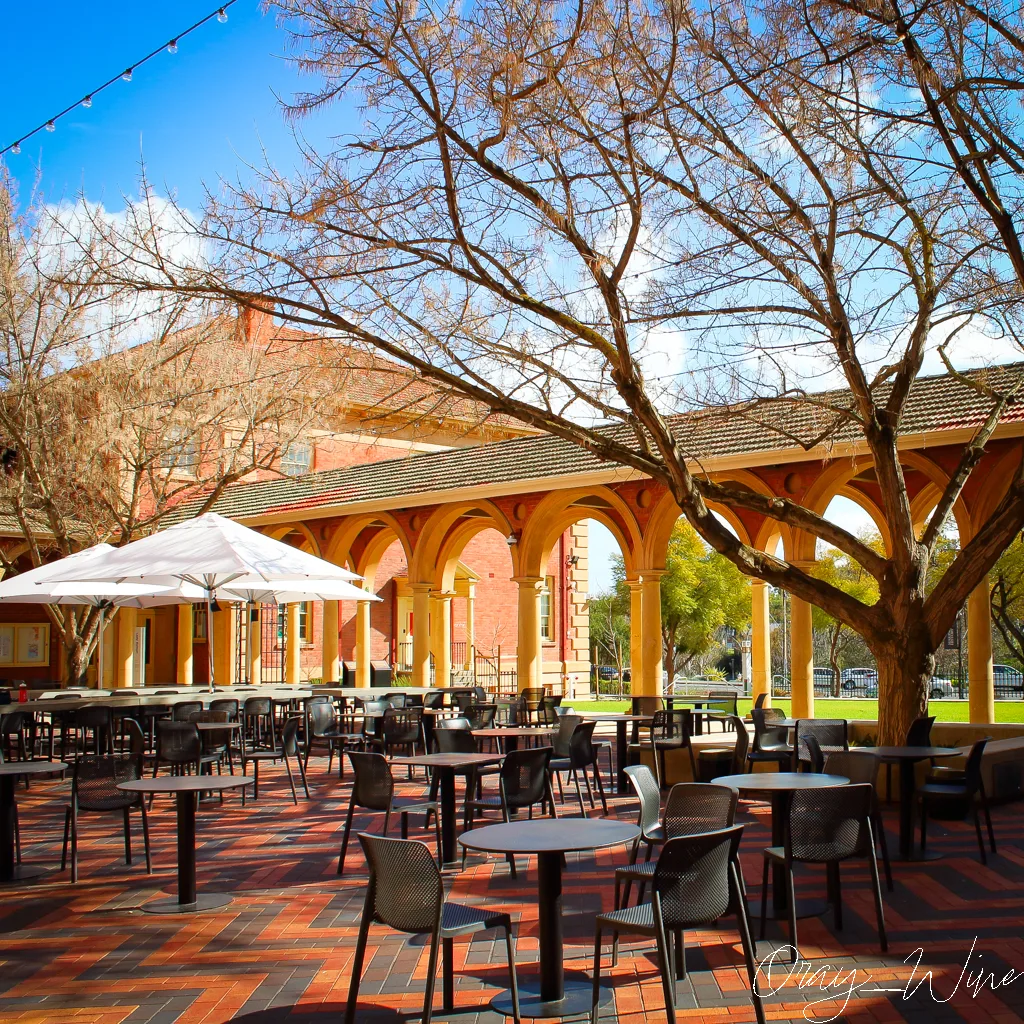
The city of Adelaide is the capital city of South Australia region, the state’s largest city and the fifth-most populous city in Australia. It is located the Adelaide Plains north of the Fleurieu Peninsula, between the Gulf St Vincent in the west and the Mount Lofty Ranges in the east. Its metropolitan area extends 20 km (12 mi) from the coast to the foothills of the Mount Lofty Ranges, and stretches 96 km (60 mi) from Gawler in the north to Sellicks Beach in the south. The city is famous for its great quality of life.
The Adelaide wine region can be sub-divided into 3 areas: the Adelaide Plains, the Adelaide Zone, and, the most famous of all, the Adelaide Hills.
Adelaide Plains
The Adelaide Plains sub-region is a flat, warm (and sometimes hot) region close to the city of Adelaide. This area is home of the Primo Estate Winery, a notable winery that source most of its grapes outside of the region.
Adelaide Zone
The ‘Adelaide Zone‘, is an Australian super zone that encompasses Mount Lofty Ranges Zone, Fleurieu Zone, and Barossa Zone. The mention ‘Adelaide Zone‘ is sometimes used as Geographical Indication on wine labels which can create some confusion with the mention ‘Adelaide Hills‘.
It is to be noted that Penfolds Magill Estate is a notable resident of this area.
Adelaide Hills
The ‘Adelaide Hills’, is arguably one of the most famous wine region in Australia. It is a fashionable wine region, relatively high in terms of altitude (450-550 meters / 1480-1800 ft). It is a relatively cool wine region. It is also one of the largest wine region in Australia (stretching in a narrow band of over 70 kilometers long), home of over 90 wine labels and 50 cellar doors.
This region is particularly famous for growing fine Sauvignon Blanc. This region also produce notable wines from the ‘international’ grape varieties Pinot Noir and Chardonnay. It has a little production of white wines based on the Grüner Vetliner and Riesling grape variety. Besides, it also produces some wines from Shiraz (sometimes blended with Viognier) in the cooler parts of the area. To complicate things, a little area located North is characterized by lower-altitude west-facing slopes that allows the production of fuller-bodied wines based on Shiraz (the local name for the Syrah grape variety, endemic to the Rhone Valley in France).
The Adelaide Hills wine region is subdivised into 2 sub-areas of Lenswood and Picadilly Valley are officially recognized subregions that can be mentionned on wine labels.
The region of Adelaide Hills is bordered by the warmer wine regions of the Barossa Valley to the North and McLaren Vale and Langhorne Creek to the South.
Adelaide Hills: notable historic facts
In 1836, a pioneer named John Barton Hack built the first vineyard in South Australia in Chichester Gardens, North Adelaide. They were almost certainly European vine cuttings, such as Grenache or Shiraz, obtained in Cape Town and planted as soon as they arrived.
To escape the city’s growing urbanization, Hack plucked his vineyard in 1840 and moved the vines to Echunga Springs near Mount Barker. In 1843, Hack sent Queen Victoria a case of wine made from the vineyard, the first gift of Australian wine to an English monarch.
Auldana in 1842, Dr. Christopher Rawson Penfold’s “The Grange” at Magill in 1844, plantings by Arthur Hardy at Mount Lofty, John Baker’s Morialta Vineyard at Norton Summit, EJ Peake at Clarendon, Glen Ewin Wines at Houghton (currently Willabrand Fig Orchards), and Harry Dove Young’s Holmesdale at Kanmantoo were all among the other hilly vineyards that were established after Hack paved the way.

Adelaide Hills: the French influence
Edmund Mazure, a French-trained winemaker hired by Sir Samuel Davenport at Beaumont in 1884, had a significant impact on colonial Adelaide Hills winemaking. Later, he worked at Young’s Kanmantoo Vineyard and Auldana Vineyards, where he helped create the distinctive Australian red wine styles of sparkling burgundy and champagne made using the methode champenoise.
Adelaide Hills: difficult times
In the central Mount Lofty Ranges, 225 grape growers engaged in viticulture and winemaking from 1840 to 1900.
The elimination of Imperial Preference, which had favored the exports of Australian product to the United Kingdom, caused a large number of these early vineyards and wineries to go bankrupt, though, in the early 1900s. The land was utilized for sheep, beef cattle, dairying, as well as vegetable and fruit production for the following 50 years.
Adelaide Hills: the revival
A renaissance occurred in the 1970s and 1980s thanks to a new generation of pioneers who understood the region’s cool climate qualities, including Brian Croser, Stephen George, Tim Knappstein, Stephen and Prue Henschke, Geoff Weaver, Michael Hill Smith, and Martin Shaw.
Since then, it has developed into a hotspot for tiny, artisanal winemakers wanting to make sophisticated, durable European-style wines.
Adelaide Hills: Sauvignon Blanc as a signature grape variety
Adelaide Hills is the Australian reference in terms of production of white wines from the Sauvignon Blanc grape variety. These wines are savvy, textured, edgy, vibrant and dry. They usually offer a lengthy finish and some crispness that marry superbly with summer seafood.

The University of Adelaide
The University of Adelaide is a reference in the world of wine, it is Australia’s most influencial centre of wine education and research. In 1991, the Roseworthy Agricultural College was merge to the Univeristy of Adelaide to form its Department of Horticulture, Viticulture, and Oenology.
Most of the teaching in oenology, viticulture, and wine business takes place at the Waite Campus (7km away from the city center). The Waite Campus houses the unique Hickinbotham Roseworthy Wine Science Laboratory, built to the starndard a classical commercial winery, that can process over 120 tonnes of grapes annually for experimental winemaking and research purpose.
This University also have a unique access to two international organizations famous for their research in viticulture and oenology: the Australian Wine Research Institute (AWRI) and the Commonwealth Scientific & Industrial Research Organization (CSIRO).
My Top-5 wineries to visit and taste in Adelaide Hills
Here is my Top-5 wineries to visit if you are in the Adelaide Hills area:
- Shaw + Smith: THE winery that you shoul not miss if you are around. Just enjoy the setting and taste any of their wines (I personally have a preference for their white wines)
- Sidewood Estate: no doubt that their Mappinga Shiraz is a great wine, make sure to give it a try
- Bird in Hand: great wines (you should try their Shiraz), beautiful gardens and beautiful building renovation
- Pike & Joyce Wines: I really liked the setting and their surprising Pinot Noir based wines
- Cobbs Hill Estate: I liked the walking tour and their white wines

Follow me on my Social Media
Wine is a gourmet treasure, do not abuse alcohol!
None of this content has been sponsored
I did not receive any gifts or free samples that could be related to this article


